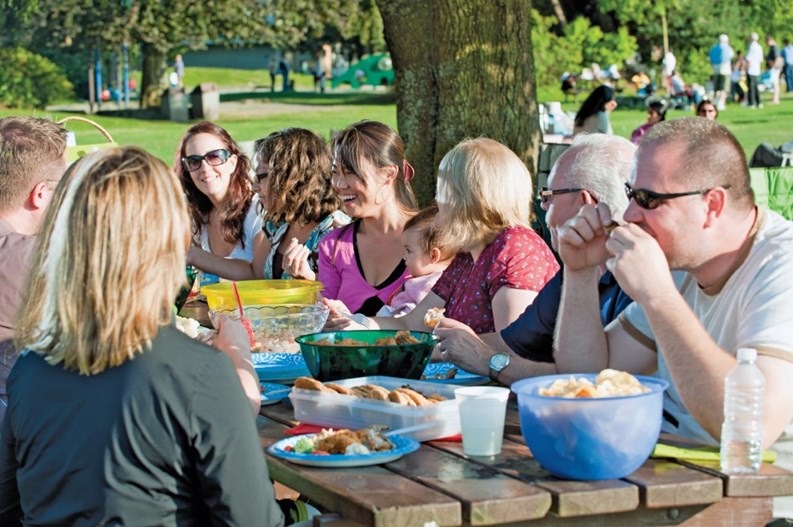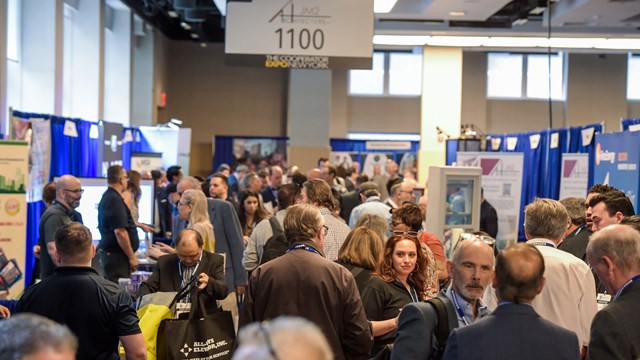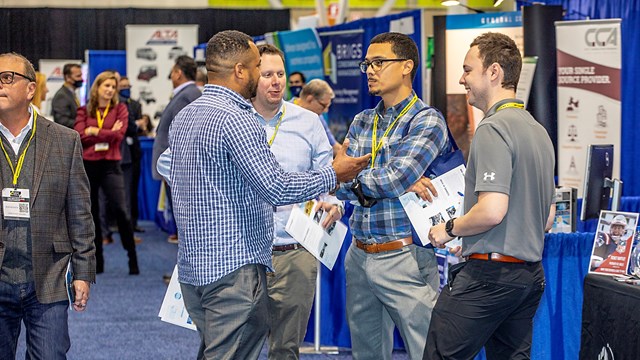For community associations facing a world of economic uncertainty, the old notion of “strength in numbers” has perhaps never felt more relevant. Because when it comes to tough problems, the associations that are able to work together and sacrifice together are the ones that usually end up stronger in the end.
In many cases though, neighbors start blaming neighbors when trouble strikes, residents start blaming board members, and board members may find themselves resenting residents. Strife and discord can spread like a disease through a condo community beset by trouble, financial or otherwise. Even when money isn't tight and things aren't especially bleak, apathy and disinterest in the association beyond one's own front yard is a problem that all administrators and boards struggle against.
There are ways, however, to encourage communities to stick together when the chips are down. With some planning and some commitment, residents, board members and managers can build a cohesive team that can cope with and resolve problems, making a better life not only for themselves but for the community as a whole.
Participation, Communication
There are a couple of key differences between communities that hang together during trying times and those whose sense of community spirit is non-existent even when things are good, says Alan Crawford, owner and president of Crawford Community Management Services in Rumson. "In the larger communities we find that a lot of people in their busy schedules don't really get to the source of a problem. But in the smaller, more tight-knit communities over the last three years, we find that members will step up and say 'Hey, I have expertise in engineering,' or 'My expertise is landscaping. I can give my time to this and we don't have to pay somebody outside to do it.'”
"There are certain communities that are apathetic," says Philip Alampi of TAP Property Management in Glen Ridge, "and then there are other communities that have a sense of camaraderie, a sense of belonging to the community such that participation is almost necessary to be a part of the community and to really be active. We have two 55-and-older communities, and they tend to be more involved, more active, more caring. On the other hand, we have one community that is probably about 70 percent vacation homes and say 25 to 30 percent year-round residences. Their communication is almost 100 percent electronic."
And communication, whether electronic or face-to-face, is the other factor that can make or break an HOA. If funding is tight and services and amenities are being scaled back, for example, residents may start looking for someone to blame. For board members and managers who know such reductions are coming, it’s always best to start communicating—early and often.
“We believe in very open lines of communication,” says Nicole Engelmann, corporate lifestyle director for Capital Consultants Management Corporation in Scottsdale, Arizona who develops community programs and social networks to add value to her properties. Englemann says that one surefire way to improve communication and transparency is to build relationships between management and residents. In one of her communities, for example, the manager often cooks dinner for groups of residents and invites them in to get to know one another and to get to know him. “Taking the time to get to know residents on a more personal level makes it much easier to have a conversation when problems do come up,” Engelmann says. “People don’t avoid talking to the manager because now they know him.”
Other ways to connect residents include community service, newsletters, outreach programs or social gatherings. “We started noticing that if we had picnics for residents, the ongoing daily business of the association became easier,” Engelmann says. “People became friendlier; neighbors looked out for each other. When neighbors started getting to know each other, they started taking care of each other.” And if an association is suddenly struck by misfortune, Engelmann says those connections will pay off. “It’s much easier to focus and mobilize a group that’s networked,” she says.
And social functions take on many forms depending on a community's location and dynamic. "When the community is there at the shore, it's a very active community and a lot of fun," says Alampi of his company's oceanfront properties. "They also come down for a Christmas party during the winter and get together for a Super Bowl party on the weekend when people come down to their homes. One community even had a fundraiser for wounded veterans. One of the managers' children was in Afghanistan, and when he came home, [they did] an event and sent care packages off to Afghanistan. The community really came together and helped with that in a way that I think is pretty unique."
Crawford agrees that human connections can make all the difference. "It's one thing when a new homeowner comes in and they get a package from management. They're kind of like 'Okay, management is welcoming us, blah, blah.' But if you have a resident-based welcoming or hospitality committee to go out and welcome new homeowners, that's something different. Here are actual homeowners who come out and say, 'Hey! Welcome to our community. Do you have any questions? This is what we have been doing, this is what you can do.' We found that new homeowners become more involved when there is a homeowner-based welcoming committee."
Starting at the Top
For most communities, it takes at least a few strong leaders to bring the metaphorical troops together. Whether it’s a manager or board members or simply someone with a lot of clout among the neighbors, someone has to step forward and let people know that problems are better solved if everyone contributes to their solutions.
Jo-Ann Greenstein, PCAM, who wrote a chapter of Building Community: Proven Strategies for Turning Homeowners into Neighbors, knows exactly what it’s like to help residents work through troubled times. As vice president of RealManage in Anthem, Arizona, Greenstein has been working with a condo community that was flattened by more than $40,000 in debt and was teetering on the brink of bankruptcy. On top of those difficulties, they were also plagued by water problems, including a flood that decimated the clubhouse. As a result, the community was forced to slash its landscaping program to the bare minimum and had to close the pool down, among other things.
At first, residents were angry—they had been unaware that a debt problem even existed. Greenstein held two general meetings, which were heavily attended “because people were hostile,” she says. In the first meeting, she let everyone vent. In the second meeting, she told them what had to be done to fix the problems. More importantly, she asked them to come out and help.
Greenstein says she worked with the board to get people involved and was able to find volunteers to run lawnmowers, pull weeds, change light bulbs and lend a hand wherever possible. “You have to lead by example.
I was out there on my hands and knees pulling weeds,” she says. “When people see somebody out there doing stuff, they’ll usually come out and help.”
It’s imperative as well, Greenstein says, to get board members involved, even if a community’s difficulties have bred dissent between leaders and residents. “You have to get board members to put their feelings aside,” she says. “Sometimes they have axes to grind,” but they have to ignore that and instead, work to bring the team together. “When people see the association doing something for people, that’s what makes the connection. The more you extend your hand to them, the more they’ll want to become part of the community.”
By working together, Greenstein’s troubled community was able to pay off its debts and just recently reopened its pool. It was the direct result of people working together, coming out of their houses on a Saturday, meeting up for lemonade and putting on their work gloves. As Greenstein says, laughing, “With juice and cookies, anything’s possible.”
That do-it-yourself, lend-a-hand spirit can mean the difference between whether a struggling HOA recovers relatively unscathed, or continues to flail for years, says Crawford. Enlisting volunteers to help with weed-pulling, checking in on elderly or infirm residents regularly, and holding fundraisers are just a few of the ways Crawford says many HOAs are surviving the current recession.
And again, Crawford returns to the twin issues of involvement and communication. "Every community's documents require one annual meeting a year," he says. "That's usually to pass the budget and elect new board members. But we've found it really helps to get in at least one second, non-official community gathering, whether it be a garage sale, a barbecue, or game night once a month in a community's recreational facilities—card games, board games, whatever. Just get the families out. Anything that you can get the community together on a non-official type basis bonds people together so that when the tough times hit, they can all stand toe to toe with each other."
Leading Strong
When communities are faced with hardship, residents and board members alike have to face some tough choices. What do we fix first? What resources do we take from to fill the gaps here or there? Who’s going to do what? The pros agree that when it comes to financial issues, communities need to trust their leaders and know that the right decisions are being made. Without that trust, associations can splinter and fail.
According to Crawford, the biggest threat to trust is fear. "It's just like with everything else," he says. "You have to communicate with the owners. You have to let them know exactly what you're doing, and when you want to do it. No question is stupid, and no question can be asked enough. The board can't hide behind something. If you are truthful with your homeowners and work to alleviate whatever fears and concerns that they may have, you'll see that people will get on board. In fact, in one of our communities, we did a deferred maintenance plan and had to level an assessment, but the homeowners actually voted to add $20 more to the assessment than I had proposed, because they saw what was on the table and said 'Let's make sure we have the money and can get everything done.' And they chipped in the extra $20 apiece, because they weren't fearful. They saw what was being planned, they saw the work that they wanted to be done, and they all agreed that it would make their community better."
"Good leadership is one of the biggest things," agrees Alampi. "If you listen to your professionals, you listen to your accountant, you listen to your lawyer, and you listen to your manager: If you have three people telling you that choice A is the right choice, you can't let the board pick C, and that's really important. The people who you're dealing with frequently have 25 years of experience each, maybe 100 years among the three of them. And you really should rely on your professionals because they've seen this already. This happened before—this happened in the '80s. Now it's just going around again in a circle."
Again and again, management professionals stress the importance of transparency and communication. When residents feel that they can trust their board and managers, and see that they are trying to make the community a better place, morale and involvement invariably improve. For condo communities and associations to not only survive these tough times but ultimately thrive when they’re over, people have to stick together. When there are a hundred hands holding on to the umbrella, weathering the storm becomes a whole lot easier.
Liz Lent is a freelance writer and a frequent contributor to the New Jersey Cooperator. Additional research by David Chiu.






Leave a Comment